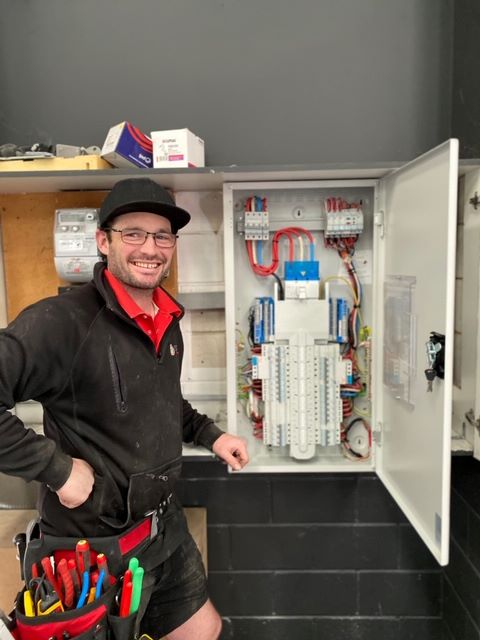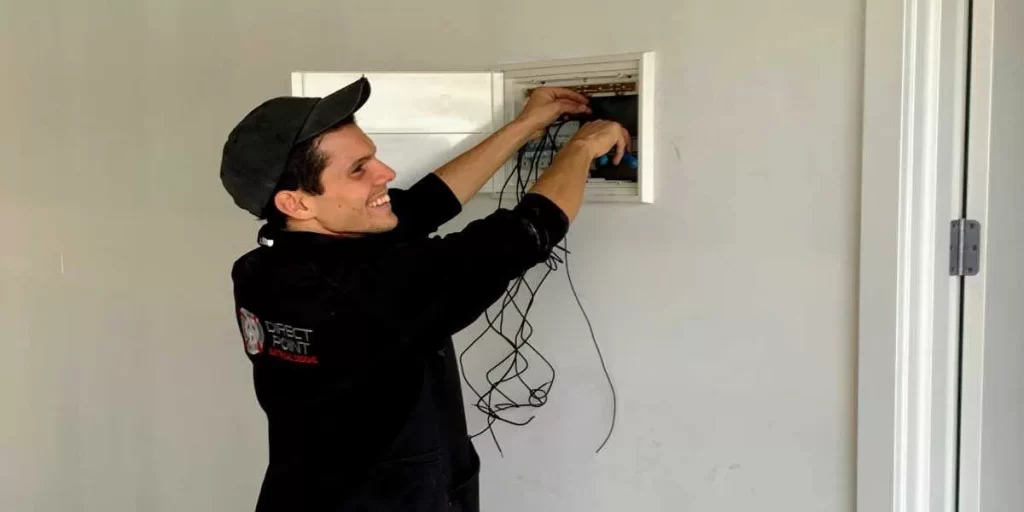When undertaking electrical installations for residential or commercial properties, a common concern arises regarding whether a main breaker is necessary in a sub panel. This question frequently surfaces as property owners explore options for enhancing their electrical systems or integrating new circuits to meet increasing energy demands. Understanding the function and regulatory requirements of sub panels is essential for establishing a safe, efficient, and compliant electrical setup that accommodates all operational needs effectively.
Typically, a sub panel does not require a main breaker, as it receives power from the main panel, which already includes a main breaker responsible for overall power distribution. The main panel’s breaker acts as the primary disconnect for the entire electrical system, covering all connected sub panels. Nonetheless, certain local electrical codes or specific installation scenarios may necessitate the inclusion of a main breaker in sub panels, particularly to enhance safety measures or improve operational convenience. It’s crucial to meticulously check local regulations to ensure adherence and maintain a high level of safety.
Although not mandatory, installing a main breaker in your sub panel can provide several significant benefits. It creates a straightforward method for disconnecting power to all circuits within that specific panel without affecting the entire electrical system. This feature is particularly advantageous during maintenance activities or emergencies, as it allows for the safe isolation of different circuit sections in your property’s electrical network, thereby enhancing safety and facilitating easier access during critical situations.

Discover the Essential Functions and Benefits of Sub Panels in Electrical Systems
Sub panels play a crucial role in electrical systems, facilitating efficient power distribution to designated areas or appliances throughout a property. They significantly enhance the control and organization of circuits while improving the overall capacity to manage electrical loads. By strategically placing sub panels, property owners can optimize their electrical infrastructure, ensuring diverse appliances and equipment have sufficient power supply and operational capacity. This strategic distribution not only improves efficiency but also enhances the overall functionality of the electrical system, leading to a more seamless user experience.
Delve into the Importance and Advantages of Sub Panels
A sub panel, often termed a subsidiary panel or distribution board, serves as an additional electrical panel that branches off from the main electrical panel. Its primary purpose is to act as a secondary distribution point for electricity within a building, providing enhanced flexibility and improved efficiency. Sub panels are typically installed to:
- Increase circuit capacity for a diverse range of applications and equipment.
- Isolate power supply to specific areas or devices, greatly improving safety and convenience.
- Enhance the organization and management of the electrical system to streamline operations effectively.
Common installation locations for sub panels include garages, workshops, and larger residential properties where the main panel may be situated far from areas that require power. By incorporating sub panels, property owners can achieve more efficient power distribution, simplifying circuit management and improving access and control over their electrical infrastructure. This ultimately leads to enhanced functionality, user satisfaction, and a more reliable electrical system.
Key Considerations for Assessing Electrical Load Needs Before Installing a Sub Panel
Before proceeding with a sub panel installation, it is vital to carefully assess the electrical load requirements. Key factors to evaluate include:
- The total amperage required for the specific area or equipment.
- The number and types of circuits essential for particular applications.
- The distance from the main panel to the desired sub panel location.
Accurate load calculations are critical to ensure that the sub panel can manage the expected demands safely. Generally, sub panels are available in capacities ranging from 60 to 200 amps, depending on their intended use. Aligning the sub panel’s capacity with your specific electrical requirements is essential for both operational efficiency and safety. Additionally, considering potential future expansions when determining the size of your sub panel can save time and costs, preventing the need for upgrades or replacements as your electrical demands evolve.

Crucial Factors to Ensure Safe and Effective Sub Panel Installation
To ensure a safe and efficient installation of a sub panel, it is imperative to address several critical factors, including the required circuit breakers, adherence to regulatory standards, and the implementation of essential safety measures. Understanding these installation requirements is paramount for establishing a secure and compliant electrical system that operates optimally and safely.
Assessing the Necessity for Circuit Breakers in Sub Panels
While sub panels do not always require a main breaker, the necessity can vary based on specific circumstances, including:
- The distance from the main panel: If the sub panel is located far from the main panel, a local disconnect may be necessary for safety.
- The number of circuits: Sub panels that have more than six breakers typically require a main breaker for enhanced safety.
- Local codes: Certain jurisdictions mandate the installation of main breakers in all sub panels to ensure compliance and safety.
A main lug sub panel relies on the main panel’s breaker for overcurrent protection, which is a common configuration when the sub panel is close to the main electrical panel. It is crucial to fully comprehend the specific requirements of your installation to ensure compliance with safety standards and local regulations, thereby safeguarding the integrity of your electrical system.
Understanding Regulatory Standards Governing Sub Panel Installations
In Australia, specific electrical standards regulate sub panel installations, which include:
- AS/NZS 3000: This standard outlines comprehensive requirements for all electrical installations, ensuring safety and reliability in the electrical system.
- Maximum rating: Main breakers for sub panels must not exceed the ampacity of the feeder conductors to guarantee safe operation and functionality.
- Labeling: Clear identification of the power source for the sub panel is a mandatory requirement, assisting in maintenance and safety procedures.
Adhering to these standards is vital for ensuring both safety and legal operation of electrical systems. It is highly recommended to consult local authorities regarding specific regional requirements, and remember that all electrical work should be conducted by a licensed electrician to ensure compliance, safety, and efficiency!

Implementing Essential Safety Protocols for Sub Panel Installations
Implementing robust safety measures during sub panel installations is crucial to mitigate electrical risks and ensure operational safety. Key measures include:
- Proper grounding: Ensure that the sub panel is effectively grounded to minimize the risk of electrical shocks and enhance overall safety.
- Adequate spacing: Maintain sufficient clearance around the panel to facilitate easy access and ensure adequate ventilation, preventing overheating and potential hazards.
- Weatherproofing: For installations located outdoors, utilize weather-resistant enclosures to protect against moisture and environmental factors that could compromise safety.
Additionally, it is essential to utilize the correct wire sizes and types tailored to the expected load. Installing arc fault circuit interrupters (AFCIs) and ground fault circuit interrupters (GFCIs) in alignment with code requirements is also crucial for safety. Regular inspections and maintenance of the electrical installation significantly contribute to ongoing safety and compliance. Always engage a licensed electrician for sub panel installations to ensure that all safety standards are meticulously adhered to, providing peace of mind for property owners.
Find Answers to Frequently Asked Questions About Sub Panels and Main Breakers
The complexities surrounding sub panels, including considerations about breakers, sizing, and regulations, can be overwhelming for property owners. Achieving a clear understanding of the essential requirements is crucial for ensuring a safe and compliant electrical setup that meets local codes and safety standards, ultimately protecting both the property and its occupants.
Is a Main Breaker Required for a Sub Panel?
A sub panel does not necessarily require a main breaker. The necessity largely depends on its location in relation to the main panel and local electrical codes. If the sub panel is located within the same structure as the main panel, a main breaker is typically not required, simplifying the installation process and reducing costs.
Conversely, if the sub panel is situated in a separate building, it generally must include a main breaker for safety and compliance reasons, ensuring that all electrical installations adhere to local regulations and safety standards that protect both people and property.
Can a Main Breaker Panel Serve as a Sub Panel?
Yes, a main breaker panel can function as a sub panel, although it may not always represent the most efficient choice. In this configuration, the main breaker would act as an additional disconnect point rather than the primary disconnect for the entire electrical system.
Opting for a panel specifically designed as a sub panel is often more cost-effective and space-efficient, providing enhanced functionality and better accommodating your electrical needs effectively.
What Size Breaker is Suitable for a 100 Ampere Sub Panel?
For a 100 ampere sub panel, it is standard practice to use a 100 ampere breaker in the main panel to supply it. This breaker should match the sub panel’s rating to ensure optimal protection and functionality, thus providing a reliable power supply that meets your electrical requirements effectively.
Additionally, the wire size must also be appropriate for managing a 100 ampere load, ensuring that the entire electrical system operates safely and effectively without any risk of overload or failure.
What Regulations Govern Electrical Sub Panels?
Regulations surrounding electrical sub panels can vary by region, but they primarily focus on safety and accessibility. Key regulations typically include:
- Proper grounding and bonding procedures to enhance safety and minimize risks of electrical hazards.
- Correct wire sizing to effectively accommodate anticipated loads and ensure operational efficiency.
- Adequate spacing around the panel to ensure accessibility and safety during maintenance and operation.
- Clear labeling of all circuits within the panel for better management and quick identification during troubleshooting.
It is essential to always refer to local codes and consider professional installation to ensure full compliance with all regulations, thereby creating a safe electrical environment that protects both property and personnel.
What is the Capacity Limit for a Sub Panel Connected to a 200 Ampere Main Panel?
A sub panel connected to a 200 ampere main panel does not come with a fixed capacity limitation. The size of the sub panel is contingent upon several factors, including:
- The available capacity in the main panel to support additional loads without overloading the system.
- The intended load requirements for the sub panel based on its expected usage and connected devices.
- The wire size utilized between the panels, ensuring it can safely accommodate the load without risking overheating or failure.
It is possible to install a 100 or 150 ampere sub panel, provided that the main panel has sufficient spare capacity to support it. This flexibility allows for future electrical needs and expansions, ensuring that the electrical system remains adaptable and efficient.
How to Properly Size a Breaker for a New Sub Panel Installation?
To effectively size a breaker for a new sub panel, follow these vital steps:
- Calculate the total load that the sub panel is expected to support, taking into account all connected devices and their specific power requirements.
- Select a panel rated for that load or higher to ensure safety and prevent any potential overload or hazards.
- Choose a breaker in the main panel that aligns with the sub panel’s rating for optimal performance and protection against electrical issues.
It is wise to factor in future expansion needs when sizing the panel. Often, installing a slightly larger panel than currently required can provide additional flexibility for accommodating future electrical demands, thus enhancing the adaptability and efficiency of your electrical system.
The Article: Does a Main Breaker Need to Be in a Sub Panel? first appeared on https://writebuff.com
The Article Main Breaker Requirements for Sub Panels Explained Was Found On https://limitsofstrategy.com
The Article Sub Panels Explained: Main Breaker Requirements Uncovered First Appeared ON
: https://ad4sc.com

